“Overcoming poverty is not a task of charity, it is an act of justice. Like Slavery and Apartheid, poverty is not natural. It is man-made and it can be overcome and eradicated by the actions of human beings. Sometimes it falls on a generation to be great. YOU can be that great generation. Let your greatness blossom.” –Nelson Mandela
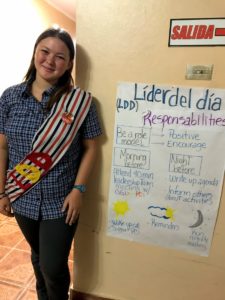 Hey there, everyone! My name is Jenna Spann, and I was the Leader of the Day today for our Aid and Development and CAP Discovery Day. I intentionally chose to be Leader of the Day for this day because I believe that in order to be a well-rounded world citizen, I have to understand the nuances of global aid and development. I thought that this day would be the perfect first step in developing that consciousness. The Aid and Development Day centers around the difference between humanitarian aid and global development, and how the two are used throughout the world. The day also revolves around CAP Discovery, the first phase of our Community Action Project.
Hey there, everyone! My name is Jenna Spann, and I was the Leader of the Day today for our Aid and Development and CAP Discovery Day. I intentionally chose to be Leader of the Day for this day because I believe that in order to be a well-rounded world citizen, I have to understand the nuances of global aid and development. I thought that this day would be the perfect first step in developing that consciousness. The Aid and Development Day centers around the difference between humanitarian aid and global development, and how the two are used throughout the world. The day also revolves around CAP Discovery, the first phase of our Community Action Project.
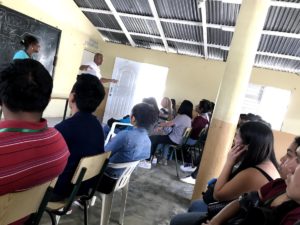

We started off our morning with a hearty breakfast, then moved into a seminar where we learned about the three steps of our Community Action Project and how to properly implement the first stage: Discovery. The Discovery phase, which we completed today, involved asking members of the community about their wants and needs. Our seminar emphasized the importance of listening to their ideas instead of interjecting our own, along with asking direct, detailed questions in order to get the information we needed for the next step of the CAP. After the seminar, we held practice conversations with our Global Glimpse Leaders and Program Coordinators. These conversations were entirely in Spanish since the community members didn’t speak English and we had to practice as such. Now, I’ll be the first to admit that my Spanish has gotten rather rusty but thanks to the help of my lovely group members, I was able to follow the conversation and contribute questions of my own without too much trouble. This activity really helped drive home the ideas of the seminar and make the idea of the CAP real for all of us.
Before we could complete the first step of our CAP, we listened to stories of aid and development gone wrong and right. The first story came from a TED Talk that we listened to on the bus ride over to the community of El Chorro. The speaker in the talk was a man that took part in an Italian aid project in Africa. In this project, the participants tried to get citizens to use fertile land in the valley to grow tomatoes. Throughout the project, they wondered why the land wasn’t in use, as well as why hardly any workers showed up to help with farming. The reasons became clear as soon as the harvest was perfectly ripe. In the span of a day, hippos decimated the crops and ate all of the tomatoes. The biggest part of this story that stood out to me was when the speaker asked a citizen why they never told them about the hippos, and the man answered, “You never asked.” These three words serve to summarize many of the humanitarian aid and development projects conceived by the United States and similar countries. The US provides the most money for development each year, but a third of it funds military aid. While the military might be thought to solve problems like terrorism, for example, they do nothing to help with many more pressing issues such as poverty, health care, and civil rights violations. The idea of the US funding the military in other countries also raises concerns. Does that military actually serve the country it’s meant to serve, or does it serve the source of its money? How much power does funding militaries give the US in the government and infrastructure of other countries? Do the wars fought by this military cause more problems than they solve? All of these questions are important to consider when thinking about US involvement in other countries, and the same holds true for all other countries.
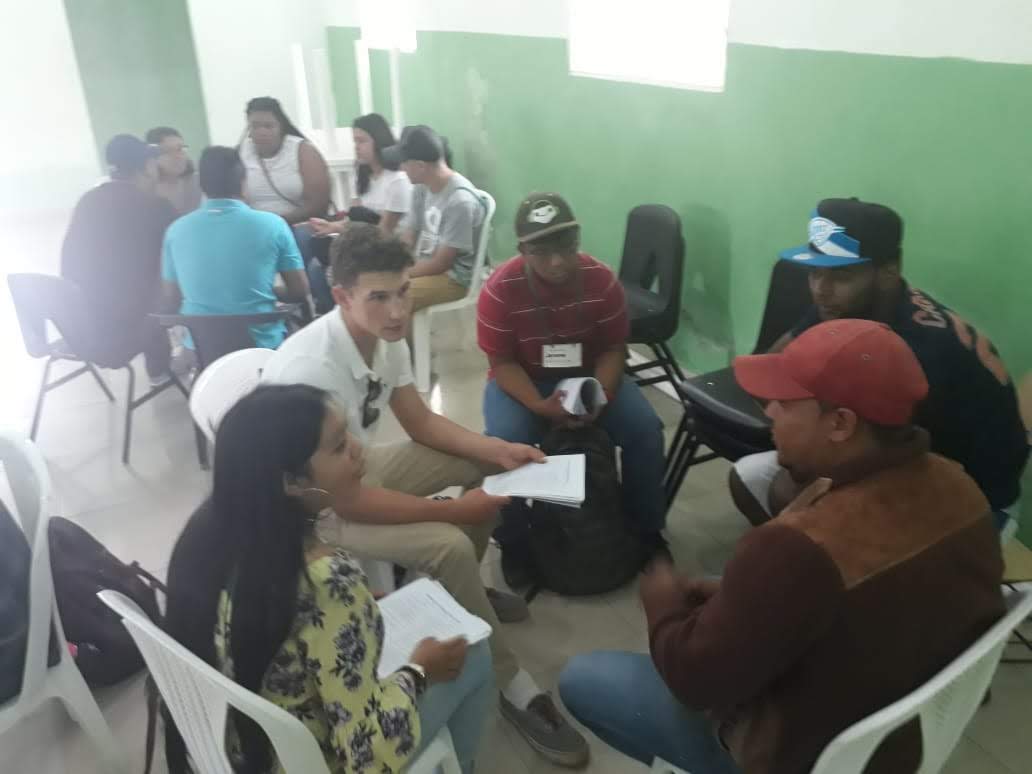 With this food for thought, we entered the community center for El Chorro. We were greeted by Carlos Corcino of the Asociación para el Desarrollo el Chorro INC, or ASODECHO. He told us about when El Chorro was considered one of the least developed communities in Constanza, and the fact that people applying for jobs had to lie on their applications because no one would hire someone from El Chorro. They had no running water or reliable sources of electricity, but by working together as a community, they were able to solve all of these problems and more. Carlos continued by reminding us once again of the difference between aid and development through a clever metaphor. He said that if a man is hungry and you give him bread, he may not be hungry that day, but what about the day after when there’s no one there to provide him with more bread? This example is one of humanitarian aid. Aid occurs when a country or community is faced with a crisis, and various individuals, governments, and other organizations intervene to provide support and services for those affected by the crisis. Aid is meant to be temporary, unlike development. Instead, development is like teaching the man to grow and harvest wheat, grind it into flour, and bake bread, then providing him with the seeds. This is meant to be long term and combat the underlying problem.
With this food for thought, we entered the community center for El Chorro. We were greeted by Carlos Corcino of the Asociación para el Desarrollo el Chorro INC, or ASODECHO. He told us about when El Chorro was considered one of the least developed communities in Constanza, and the fact that people applying for jobs had to lie on their applications because no one would hire someone from El Chorro. They had no running water or reliable sources of electricity, but by working together as a community, they were able to solve all of these problems and more. Carlos continued by reminding us once again of the difference between aid and development through a clever metaphor. He said that if a man is hungry and you give him bread, he may not be hungry that day, but what about the day after when there’s no one there to provide him with more bread? This example is one of humanitarian aid. Aid occurs when a country or community is faced with a crisis, and various individuals, governments, and other organizations intervene to provide support and services for those affected by the crisis. Aid is meant to be temporary, unlike development. Instead, development is like teaching the man to grow and harvest wheat, grind it into flour, and bake bread, then providing him with the seeds. This is meant to be long term and combat the underlying problem.
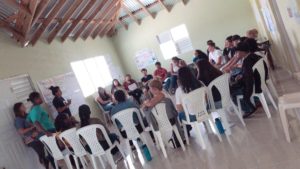
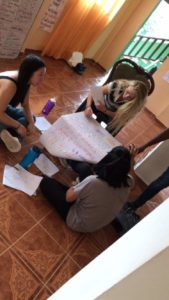 Our CAP is meant to be a development project. After listening to Carlos, we traveled to listen to members of the Colonia Kennedy community. There, they told us what they wanted to be done. All of their ideas revolved around a basketball court they wanted to be fixed, though there was a variety of details to sort through. We discussed their problems in the second step of our CAP, the design phase. This phase involved figuring out what projects and ideas were feasible, were needed, held a personal passion for us, and involved community engagement. Only with all four of these aspects could a project be considered sustainable. In the end, we decided on a combination of four different ideas: installing benches and a scoring table for the community basketball games and tournaments, painting the walls and court, setting up new equipment, and cleaning up the leaves and debris around the court. Though we knew we would have to work hard at it and stretch our hours a bit, we were (and still are) determined to complete it in the days provided for us.
Our CAP is meant to be a development project. After listening to Carlos, we traveled to listen to members of the Colonia Kennedy community. There, they told us what they wanted to be done. All of their ideas revolved around a basketball court they wanted to be fixed, though there was a variety of details to sort through. We discussed their problems in the second step of our CAP, the design phase. This phase involved figuring out what projects and ideas were feasible, were needed, held a personal passion for us, and involved community engagement. Only with all four of these aspects could a project be considered sustainable. In the end, we decided on a combination of four different ideas: installing benches and a scoring table for the community basketball games and tournaments, painting the walls and court, setting up new equipment, and cleaning up the leaves and debris around the court. Though we knew we would have to work hard at it and stretch our hours a bit, we were (and still are) determined to complete it in the days provided for us.
Once we decided, we took an hour to prep our presentation for the community. Our preparation included creating posters with notes and diagrams about the projects we decided on, as well as the materials needed for each step. All of this effort will come to fruition in the second week of our stay when we buy the materials we need and start work on the CAP.
Though we had a lot to do today, everyone kept up their positive attitudes throughout the day, and we ended with bonding time and a nightly meeting to put a lovely bow on the present that was this day as well as Zoe’s birthday. We surprised her with a birthday cake and card and then the next leader of the day, who you’ll meet tomorrow, wowed us with his rhythmic talent, and I was honored to be able to pass the torch to him.


Sounds like a big CAP! I am loving your drive and determination! Kenni! It made my whole day this morning to hear your sweet happy voice! I love you the mostest! So happy to hear you are learning and feeling challenged and I know you are being changed for good! Keep up the great work everyone! 🥰
Thanks Jenevieve! Great to hear about the CAP1 day through your lenses! Thank you for shouting out Zoe’s Bday!😊Nice work to all of you!! Thank you for writing and the pics! Sorry I missed your call, Zoe!!😭
Hola mami! Viri, estoy triste por no oír tu voz hoy!😔. Pero estoy muy orgullosa de ti por que estás demostrando responsabilidad en todos tus proyectos de trabajo y que todos se están apoyando como un buen y gran equipo de trabajo 😉 si se puede !!!
Hola mami! Estoy triste por no oír tu voz, pero estoy muy contenta por que están haciendo un buen trabajo en equipo los felicito a todos. Si se puede!!! 😉